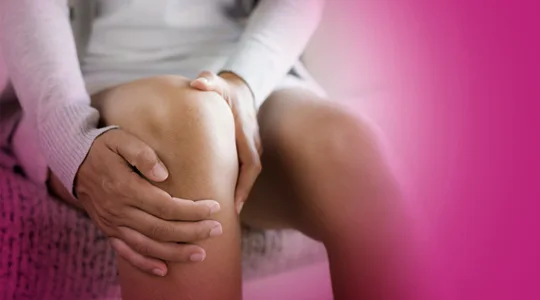
Joint Replacement

Osteoarthritis affects nearly 350 million people worldwide.1
It is a common condition in which cartilage breakdown around the joints causes your bones to rub together, and it is especially common in the knee and hip joint. Symptoms include pain, swelling, and changes in appearance and function of the joint – which can contribute to loss of motion. If other treatments, such as medication, therapy or injections, have proven ineffective, a total joint replacement may be the best way to get your life back.
Serious hip joint conditions can cause pain, reduced range of motion, and decreased quality of life. Total hip replacement can be required.
Serious knee conditions can cause pain, reduced range of motion, and decreased quality of life. Total knee replacement can be required.
TISSUE SPARING SURGICAL HIP APPROACHES
MicroPort Orthopedics is at the forefront of surgical techniques for total hip replacement designed to minimize tissue damage and streamline recovery.
In recent years, hip replacement surgery has quietly entered a new era. The concept of tissue-sparing or “minimally invasive” surgery has been applied to hip replacement. It is important to understand that true tissue-sparing surgery does not only mean a shorter skin incision, but also sparing critical muscles and tendons surrounding the hip. It is the sparing of this underlying soft tissue which allows patients to get back on their feet within days (possibly hours) instead of weeks or months.
MicroPort Orthopedics has a number of proprietary surgical hip techniques aimed to preserve tissue and promote rapid recovery. The surgical approaches include SuperPath®, SuperCap®, and PATH® approaches. Each approach is the result of years of hard work from multiple inspired surgeons and engineers combining their experiences, ideas, designs, and intellectual property.
For these surgical techniques as well as Direct Anterior and Anterolateral approaches, MicroPort Orthopedics offers a complete portfolio of instrumentation and implants that can accommodate each technique and every surgeon's needs in order to deliver optimal results for the patient.

THE ORIGINAL MEDIAL-PIVOT KNEE DESIGN
MicroPort Orthopedics' Medial-Pivot knee system features a highly conforming medial side to reproduce a healthy knee’s stability and motion.
The Evolution® medial-pivot knee is uniquely engineered to reproduce a healthy knee’s stability and motion. The medial-pivot knee features a highly conforming medial side that results from a constant radius design, reproducing the natural function and stability of the ACL and PCL. This design is unique from every other less conforming traditional knee system. With a stable, pivoting medial side and a lateral side that rolls forward or backward throughout flexion, the Evolution® knee system is designed to feel and function like a natural knee.
The medial-pivot knee system enhances quadriceps efficiency and reduces the quadriceps avoidance found in traditional knee replacements. By enhancing quadriceps efficiency, the patient can have increased proprioception and a more normal feeling knee.2
Patients can tell a difference according to a peer-reviewed study that examined patient satisfaction among patients who underwent bilateral staged total knee replacement with different prostheses. A Medial-Pivot design was preferred equally to an ACL-PCL retaining prosthesis and preferred more than all other designs (CR, PS, and Mobile-Bearing).3

REFERENCES